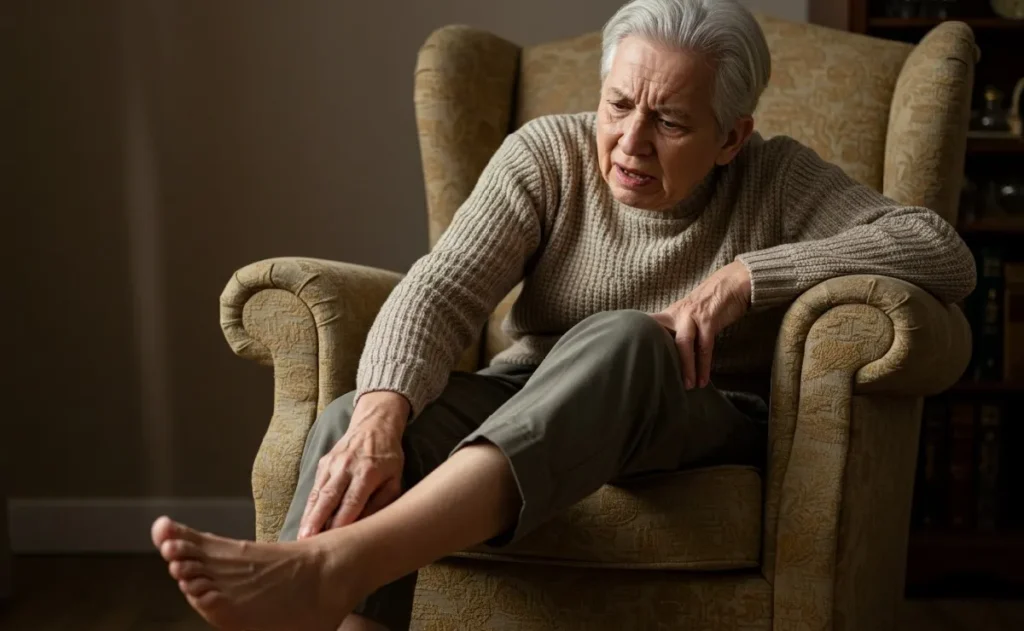Prolonged standing, being overweight, and wearing inappropriate footwear are among the most common causes of foot and ankle pain.
Made up of 26 bones, 33 joints, and more than 100 muscles, ligaments, and tendons, the feet support the entire body weight throughout life. This complexity makes them vulnerable to injury, pain, and degenerative diseases, especially over time or under conditions of overload.
Dr. Travis Hanson, an orthopedic surgeon specializing in foot and ankle at Houston Methodist Hospital, warns that Pain in these areas can have multiple causes: from natural wear and tear due to age to the use of inappropriate footwear, repetitive stress injuries, or even signs of systemic diseases..
Factors that cause pain in the feet and ankles
1. Age and Natural Wear and Tear
As we age, the soft tissues of the foot, such as tendons, ligaments, and muscles, experience microtears and degenerative changes that can cause persistent discomfort. Although pain isn’t exclusive to older adults, it does become more common with age.
2. Joint stiffness and inflammatory conditions
Joint stiffness, common in conditions such as arthritis or tendonitis, increases stress on certain areas of the foot and ankle. This can lead to chronic pain if not properly treated with stretching and physical therapy.
3. Acute and overuse injuries.
Injuries can be sudden (such as sprains) or develop progressively due to overuse, as occurs with shin splints in runners. “The body works like a metal clip: if you bend it over and over again, it eventually breaks,” explains Dr. Hanson.
4. Standing for long periods
Working or standing for long hours can cause discomfort, especially if factors such as being overweight, hard surfaces, and inappropriate shoes are combined.
5. Improper Footwear
No one shoe fits all. For those with midfoot arthritis, for example, a shoe with a thick, curved sole (rocker bottom) can relieve pain when walking. Trying on different styles and choosing the one that best fits your foot is key to avoiding discomfort.
6. Excess weight:
Being overweight or obese increases pressure on the feet, which promotes wear and tear and injury. Maintaining a body mass index (BMI) below 25 can significantly reduce the risk of pain.
Where does it hurt? Common conditions by area of the foot
The type of pain and its location may indicate different diagnoses:
- Ankle: sprains, arthritis, or joint inflammation.
- Back of the heel: Achilles tendonitis, Achilles tendon tears, or bone spurs.
- Sole: plantar fasciitis, flat feet, or heel spurs.
- Instep (top of the foot): arthritis, sprains, or spurs.
- Toes: bunions, hammer toes, or gout.
Plantar fasciitis, for example, manifests with severe pain upon taking the first steps of the day, while Achilles tendonitis is common in athletes, although it also affects sedentary people. In advanced cases, surgery may be required if conservative treatments, such as physical therapy or anti-inflammatory drugs, are ineffective.
Foot pain can reveal more serious problems.
Some foot symptoms aren’t the result of a local injury, but rather of broader medical conditions. According to Dr. Hanson, conditions such as gout (uric acid buildup), poor arterial circulation, or neuropathy can initially manifest as pain, swelling, or tingling in this area.
“We are often the first to detect these systemic problems when examining a patient’s feet,” says the specialist, who emphasizes the importance of a timely medical evaluation.
If foot or ankle pain is severe enough to impair gait or limit daily activities, it is advisable to seek medical attention. In chronic cases, treatment is not always necessary, but if the discomfort persists or interferes with quality of life, a professional evaluation can prevent further complications.

